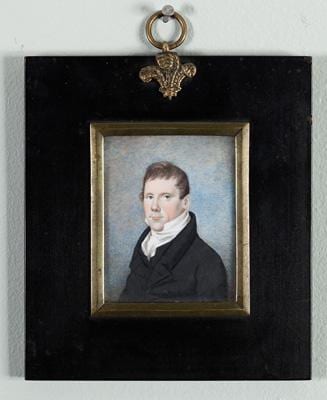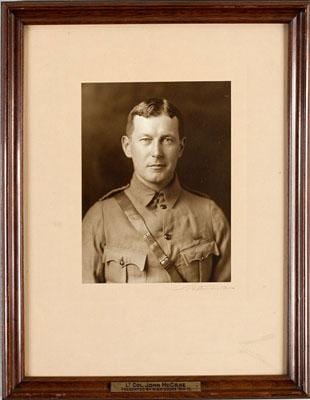
Hugh Herron Credit: Courtesy of Bytown Museum
Bytown Museum, the historic building on the edge of the Ottawa locks, has unlocked part of Ottawa’s diverse history with its latest exhibition, Hidden Treasures. The exhibition gives an intimate view into people’s lives from 1820 to 1930, including that of a gay poet soldier and two London bachelors.
The unfolding of Hidden Treasures began in the dusty storage rooms of the museum, with the discovery of a white marble bust of Lady Macdonald, by English sculptor Marshall Wood.
After discovering the bust, Mike Steinhauer, director of the museum, decided to scour the storage rooms for more treasures. He embarked on the project with curator Judith Parker, who eventually took over the reins.
In six months, Parker, with the help of five guest curators, found 40 unique objects dating back to the early 1800s.
“For me, the past and the present can live in the same room,” says Parker. “I am very interested in top-quality pieces, and they all tell a story. It is not the same story you get; it is not chronological. The historical approach is to tell the story with whatever you have.”
“This museum has a lot of hidden treasures, and the people of Ottawa ought to know about it,” says Parker.
Two small portraits in the exhibit give a glance into the lives of two men, Hugh Herron and Lt Col John McCrae.
The latter may be familiar to poetry lovers and history buffs. McCrae is well-known for his poem “In Flanders Field.” He wrote it for his friend, and probable lover, Alexis Helmer, who died in the Battle of Ypres, in 1915, during World War I.
First World War expert Glenn Wright, a retired military archivist from Library and Archives Canada, helped shed a light on the possible relationship between the two men.
Although McCrae was a Canadian from Guelph, the Ottawa connection was much simpler – Helmer was born in Ottawa, went to Lisgar Collegiate and fought in the army during WW1.
In the description of the photo, guest curator Lilly Koltun breaks down the lines In Flanders Field on what she surmised McCrae might have been thinking at the time. She juxtaposes the script with what she felt the photographer might have surmised about his subject.
Another portrait is an obscure watercolour of a gentleman named Hugh Herron. Guest curator Rosemarie Tovell found the piece after spending many hours poring over the museum’s database.
The artist is unknown, and until Parker started asking questions, the subject of the portrait was as well. Parker contacted Professor Bruce Elliott, a local historian at Carleton University, who identified Herron and his background.
“He was able to give the story of Hugh Herron’s brother,” says Parker.
Herron was a London silk manufacturer whose brother John set up in Ottawa with his companion, John Jeremiah Goodman. The two operated a general store in South March. After Herron died in 1848, Goodman carried on as storekeeper and postmaster till his death in 1854, when he was laid to rest beside his partner.
The two pieces are a tiny gay connection in a vast historical maze, but it is an important connection, and Parker is pleased that Bytown museum has uncovered it.
The exhibition runs until October. Its future after that is uncertain, but it is likely that many of the pieces, including the portraits of McCrae and Herron, will go back into the closet.
Correction to the article: Glenn Wright did not state or suggest that McCrae and Helmer were in any kind of personal relationship other than professor/student and comrades in arms.

 Why you can trust Xtra
Why you can trust Xtra


